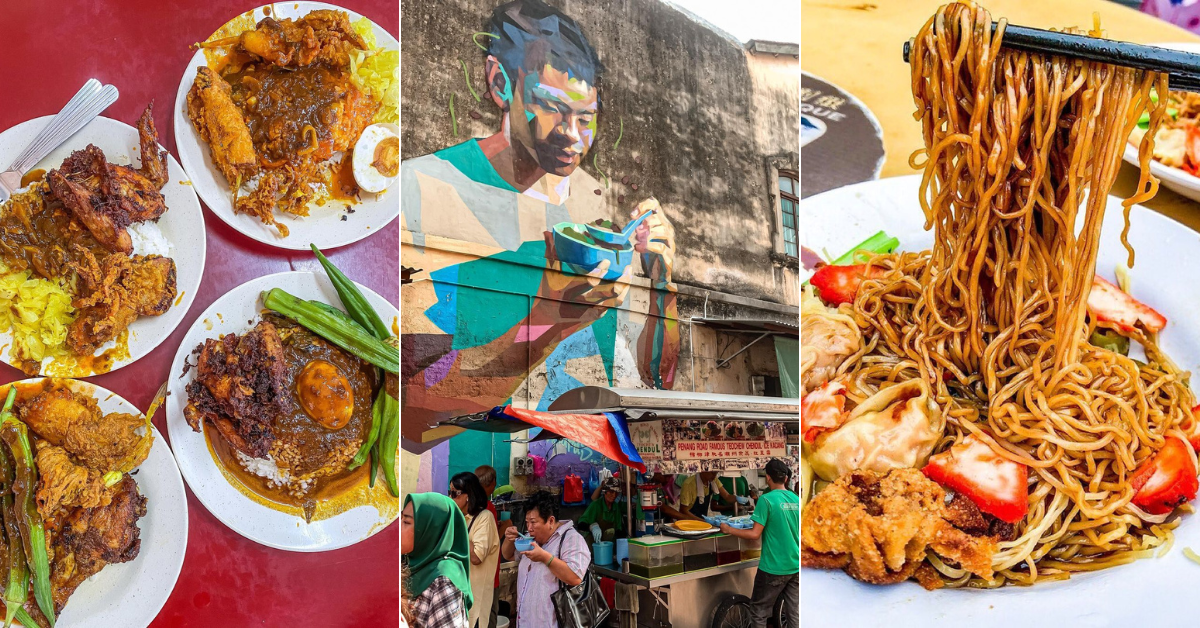moulddni0.com – Penang, often hailed as the “food paradise” of Malaysia, is a vibrant island that boasts a rich tapestry of flavors and culinary traditions. Its unique blend of Malay, Chinese, Indian, and other influences has given rise to a diverse and mouthwatering array of dishes that attract food lovers from all over the world. In this article, we delve into the culinary delights of Penang, exploring its iconic street food, traditional dishes, and the cultural significance behind its gastronomy.
Iconic Street Food: A Feast for the Senses
Penang is synonymous with street food, where bustling hawker stalls line the streets, offering a sensory feast of sights, sounds, and smells. Among the must-try dishes is Char Kway Teow, a stir-fried noodle dish with prawns, Chinese sausage, and bean sprouts, infused with the smoky aroma of wok hei. Another favorite is Penang Laksa, a spicy and tangy fish-based noodle soup, often garnished with fresh herbs and a dollop of shrimp paste.
The island’s street food scene is incomplete without Nasi Kandar, a dish of steamed rice accompanied by a variety of curries and side dishes, reflecting Penang’s Indian-Muslim heritage. And for those with a sweet tooth, Chendol—a dessert of shaved ice, coconut milk, and palm sugar syrup, topped with green jelly noodles—is a refreshing treat in the tropical heat.
Traditional Dishes: A Taste of Heritage
Beyond street food, Penang’s traditional dishes offer a glimpse into the island’s rich cultural heritage. Nyonya Cuisine, the result of intermarriage between Chinese immigrants and Malays, is renowned for its intricate flavors and diverse ingredients. Key dishes include Nyonya Curry Kapitan, a fragrant chicken curry with a rich coconut milk base, and Otak-Otak, a spicy fish mousse wrapped in banana leaves.
Penang is also famous for its Hainanese Chicken Rice, a dish of poached chicken served with fragrant rice cooked in chicken broth, and Hokkien Mee, a prawn noodle soup that highlights the island’s Chinese culinary influences.
The Cultural Significance: A Melting Pot of Flavors
The culinary landscape of Penang is a testament to its history as a melting pot of cultures. The island’s strategic location along historical trade routes brought together diverse communities, each contributing their flavors and cooking techniques to Penang’s vibrant food scene. This cultural fusion is evident in the harmonious blend of spices, ingredients, and cooking styles that define Penang’s cuisine.
Food in Penang is more than just sustenance; it is an integral part of the island’s social fabric. Meals are often communal, bringing families and friends together, and each dish tells a story of the island’s multicultural heritage.
Preserving Penang’s Culinary Heritage
Despite its rich culinary traditions, Penang faces challenges in preserving its food heritage. The rise of modern dining establishments and changing lifestyles threaten traditional cooking methods and family-run hawker stalls. However, efforts are being made to preserve Penang’s culinary legacy through initiatives that promote traditional cooking techniques and support local food artisans.
Penang’s designation as a UNESCO World Heritage Site has also brought attention to the importance of safeguarding its food culture. Culinary festivals, food tours, and cooking workshops are increasingly popular, allowing locals and tourists alike to experience and appreciate the island’s gastronomic heritage.
Conclusion
The culinary delights of Penang are a testament to the island’s rich cultural tapestry and its ability to adapt and innovate while preserving its heritage. From mouthwatering street food to traditional Nyonya dishes, Penang offers a gastronomic journey that captivates the senses and tells the story of its diverse communities. As we savor the flavors of Penang, we celebrate not only the food itself but also the vibrant culture and history that make it truly unique.
